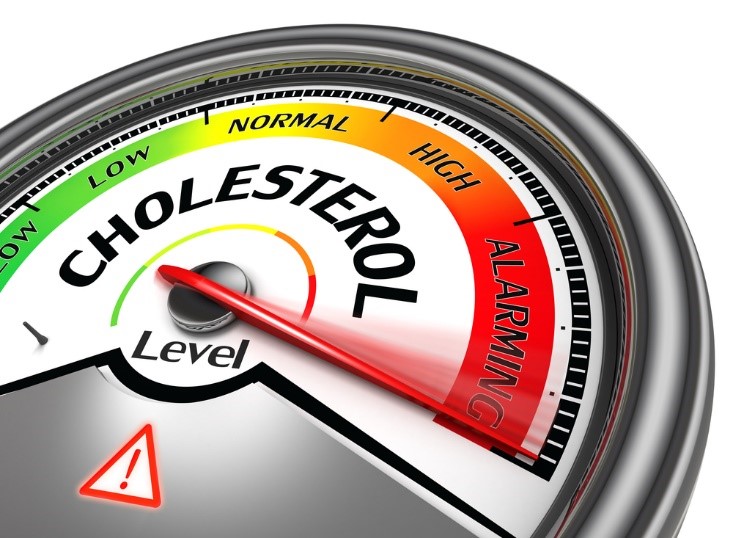Triglycerides: Everything You Need To Know

Triglycerides are a type of fat that is commonly found in the blood. Their level in the blood is an important indication of cardiovascular health. Although their presence isn’t always a concern, triglycerides’ high levels can increase the risk of heart disease.
What are triglycerides?
Triglycerides are a type of fat or lipid found in the blood. It is one of the most common types of fat found in the human body. And that has to do with how the body stores calories.
The body converts food into calories, which it uses to perform different biological functions. However, it does not use all the calories right away. Instead, it transforms excess calories into triglycerides and stores them in fat cells. And when the body needs energy, hormones release these triglycerides.
The body creates triglycerides when it has excess calories. So, for people who regularly overeat or consume high-carbohydrate meals, triglycerides are high in their bodies.
What causes high triglycerides in the blood?
Below are some common high-triglyceride causes:
1. Existing Health Conditions
If triglycerides blood test shows high levels of lipids, it may be due to existing health conditions, particularly diabetes, thyroid disease, obesity, or kidney and liver disease.
2. Side Effects
Certain medicines can also cause side effects, leading to higher blood triglycerides. HIV medications, cancer medications, steroids, retinoids, diuretics, and beta blockers are known to boost triglyceride content in the blood.
3. Unhealthy Lifestyle
People who regularly eat foods high in fat and sugar and those who do not get regular exercise are at greater risk of developing high triglycerides. Alcohol, due to its high sugar and calorie content, is also linked to elevated blood triglycerides.
What is the healthy level of triglycerides?
Just like the cholesterol normal range, triglycerides’ normal value is considered to be less than 200 milligrams per deciliter (mg/dl).
Here is a detailed breakdown of triglyceride levels in the human body:
- Normal Level: Doctors consider levels less than 150 mg/dl (1.7 mmol/L) normal triglyceride levels.
- Borderline High Level: 150 to 199 mg/dl (1.8 to 2.2 mmol/L) levels are average.
- High Level: 200 to 499 mg/dl (2.3 to 5.6 mmol/L) levels of triglycerides are high.
- Very High Level: Triglyceride levels of 500 mg/dL or above (5.7 mmol/L or above) are extremely unhealthy.
What Is the Significance of High Triglycerides?
It is important to monitor triglyceride content in the blood, like cholesterol, because high triglyceride levels indicate an increased risk of heart problems.
High levels of triglycerides can cause a disease named arteriosclerosis, which causes hardening of arteries and thickening of their walls, thus restricting blood flow to organs and tissues. It increases the risk of stroke, heart attack, and other heart problems.
An unhealthy level of triglycerides is not only a sign of poor heart health but is linked to several other health issues as well, such as:
- High blood pressure and cholesterol
- Type 2 diabetes
- Obesity (particularly high-fat content around the waist)
- Hypothyroidism, i.e., low level of thyroid hormones
- Pancreatitis, i.e., inflammation of the pancreas
What are the symptoms of high triglycerides?
People with moderate triglyceride content in their blood do not generally show any symptoms. However, patients with high levels of this lipid can show a few signs. High triglyceride symptoms include:
- Damaged skin on chest, back, arms, and legs
- Short-term memory loss
- Stomach ache
- Reddening of skin
- Swollen liver
How are high triglycerides diagnosed?
Doctors usually perform two types of health tests to diagnose high triglycerides. The first test is the regular Lipid Profile or Lipid Panel Test, which reveals both cholesterol and triglyceride levels.
The second one is called the Triglycerides Serum Test, which specifically checks blood for triglycerides. Both tests are usually taken after a certain fasting duration for more accurate results. Doctors may also advise patients to refrain from taking certain medications during this period.
Frequently Asked Questions
1. What causes high triglycerides?
Unhealthy food habits and leading a sedentary lifestyle are among the two major causes of high triglycerides. Since the body can’t use excess calories stored as fat, triglycerides level soars. Pre-existing diabetes, thyroid, and kidney disease can also cause high triglycerides.
2. What is the test for high triglycerides?
A blood test called Triglyceride Serum Test is used to measure the level of triglycerides. The regular lipid profile test can also reveal triglyceride and cholesterol levels.
3. What is the best time to test triglycerides?
The best time to test triglycerides is usually after fasting for a certain duration. Doctors typically advise patients to fast for at least 12 hours overnight before taking this test to get accurate results.













